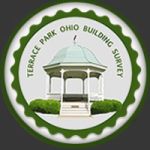| Story 2: |
2 different stories from Sibley/Lloyd relatives: From Liz
Lloyd - house built for Henrietta (Sibley - daughter of James Hastings
Sibley) & Sam Lloyd. From Sam Hicks - J. W. Sibley's house where
he planned to stay a year or two and stayed until he died in 1893.
In fact James W. Sibley, the developer, built this house for his son James
Hastings Sibley. When the census was taken in 1900 James Hastings
Sibley and his wife Cicely Burt Sibley were living here with their
daughter Henrietta Sibley, her husband Samuel W. Lloyd and their daughter
Cicely B. Lloyd. According to the Cincinnati City Directories from
1880 on, James Whitelaw Sibley lived on Grandin Road in Cincinnati.
After his death in 1893 his widow, Mary, moved to Locust Street in
Cincinnati. |
| Story 5: |
Railroad Houses (from 2008 House Tour)
James Whitelaw
Sibley is responsible for developing more of Terrace Park than any other
person. He was born February
20, 1816 in Montpelier, Washington County, Vermont and came west through
New York state where he married Mary Alida Hastings in Clinton, Oneida
County, New York, September 9, 1840. He settled in Cincinnati as a Commission Merchant.
By 1880 he and his family were living on Grandin Road in Hyde Park
where he remained until his death, April 6, 1893.
It wasn’t until 1886 that deeds show him buying up land in what
became Terrace Park. He established four subdivisions: South of Oxford to the
north side of Amherst in 1886, Myrtle to Miami and Marietta beyond Stanton
to the bluff in 1890, Amherst to Marietta and Yale to Miami in 1891 and
the south side of Amherst from Elm to Floral in 1892.
By then he was 76 years old.
Once he had
some land he needed to start building houses.
It looks as if he then found a Cincinnati architect, bought plans
for a house from him for $25 and started building homes using this plan.
These are the ones that have become known as “railroad houses”.
Perhaps they should have been called “Sibley houses” since all
of them are in his subdivisions. Why
they were called “railroad houses” remains a mystery since it does not
appear that they were built either by the railroad or for railroad
employees. Certainly it was
well know that there was easy rail transportation from this newly
developing area into Cincinnati for work.
The first home he built still stands, now greatly
enlarged, at 311 Harvard Avenue for his eldest son James Hastings Sibley.
He too was first listed in the 1880 and 1890 census as a Commission
Merchant like his father but by the 1893 Cincinnati City Directory was
listed as a Real Estate agent living in Terrace Park.
Before that he and his brother were “helping father”.
In 1887 J. W. Sibley built 306 Rugby Avenue, also now greatly
enlarged, for his next son Frank Hastings Sibley.
He also built homes for the West (203 Marietta Avenue) and
Bellville families (710 and 716 Floral Avenue) as well as for the Lucius
and Amanda Conking family at 615 Amherst Avenue in 1892.
Stella Galloway Boone wrote a paper for the Terrace Park Garden
Club in 1942 in which she lists 17 “railroad houses”.
Exactly how each one looked when it was first built we will
probably never know, but there seems to have been some variation as in 615
Amherst Avenue. Most have had
significant additions but are still recognizable as houses built by the
Sibley family in the 1880s and ‘90s. It seems sad the James Whitelaw Sibley died just as Terrace
Park was becoming incorporated. According
to Ellis Rawnsley both he and his son, Frank H. Sibley, were among the
founding fathers of Terrace Park. |
